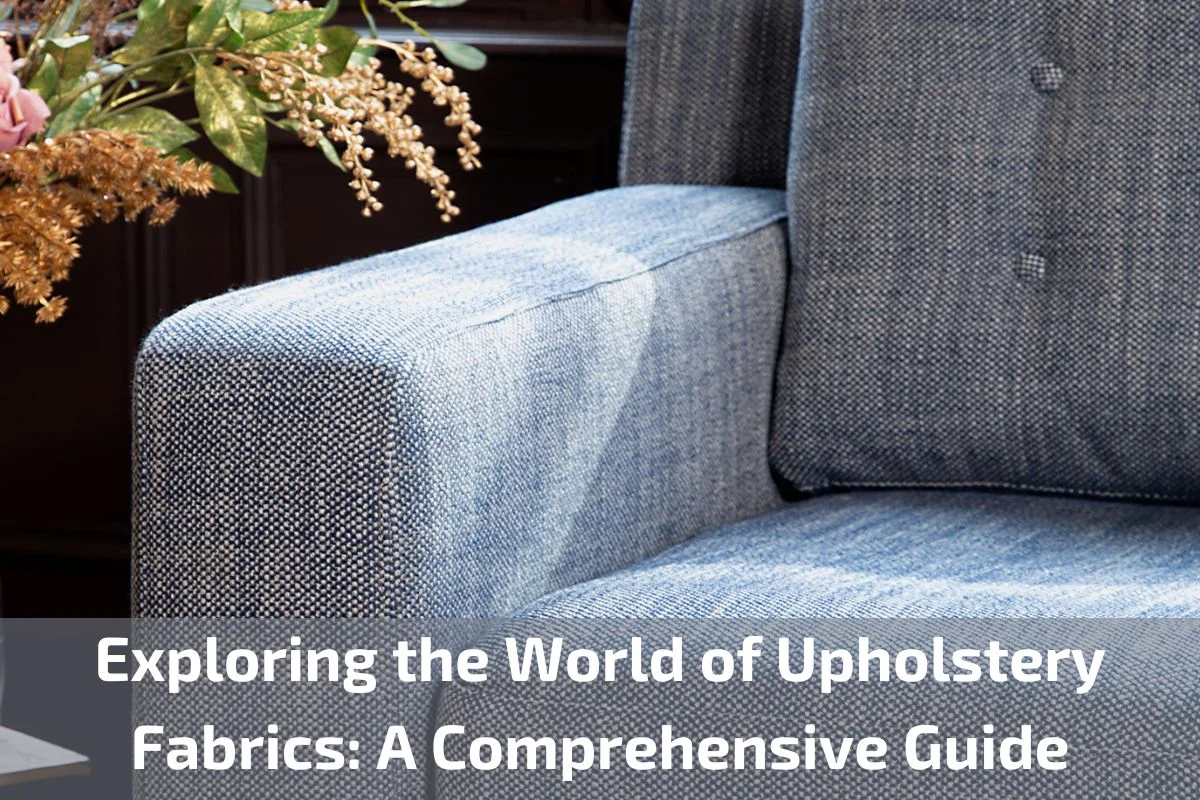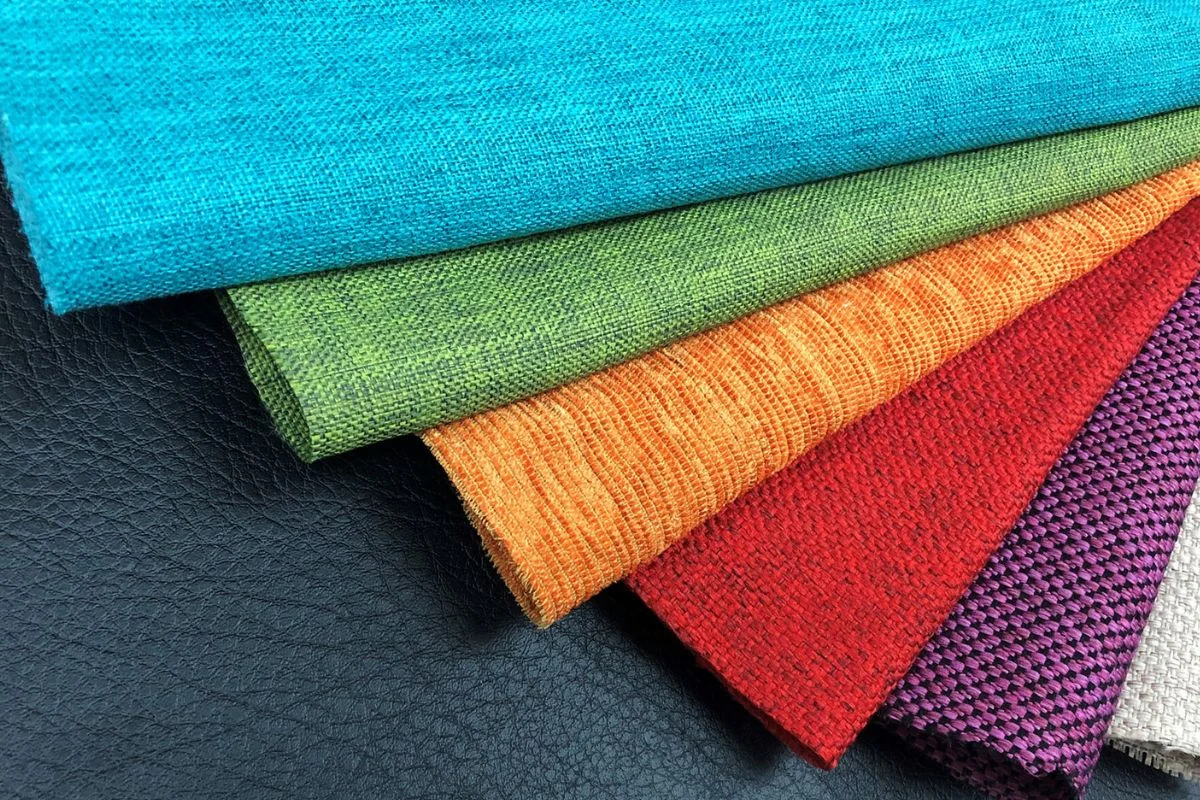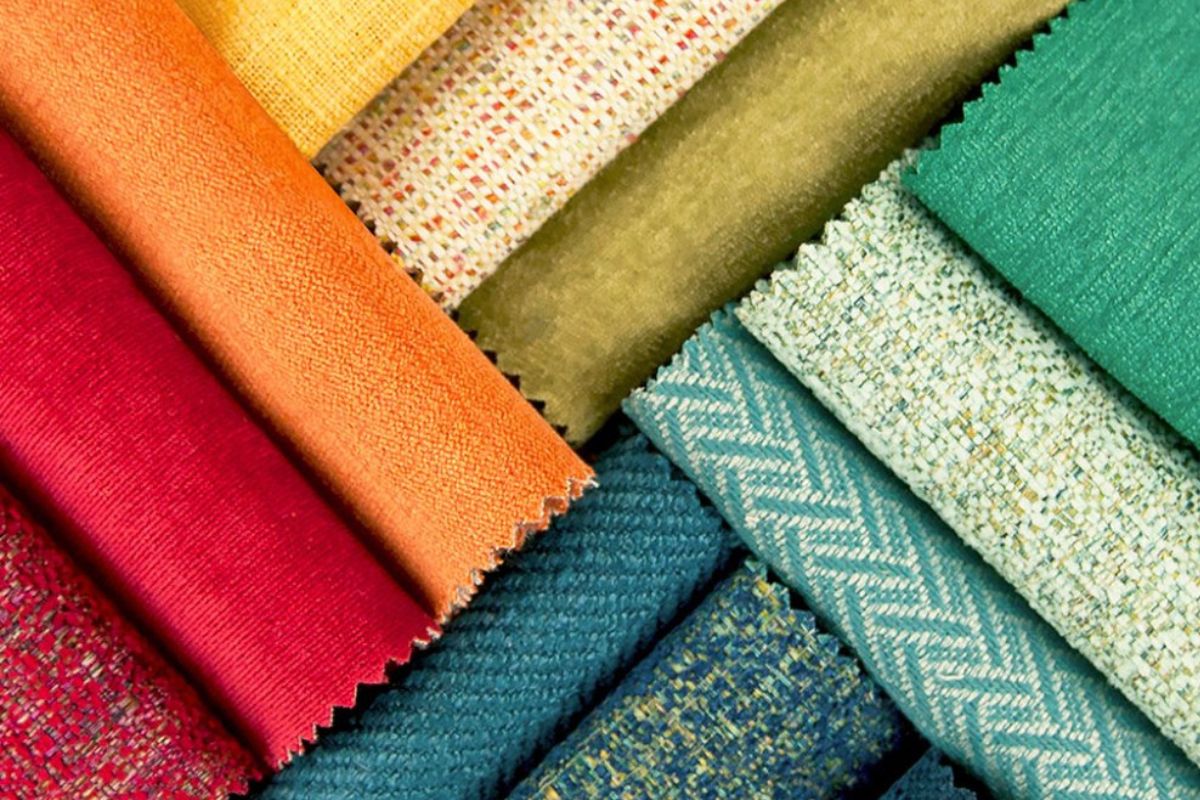Embarking on a journey into the world of upholstery fabrics opens up a realm of possibilities for enhancing the beauty, comfort, and functionality of your furniture pieces. Whether you’re considering reupholstering an old chair, selecting fabric for a new sofa, or simply exploring the vast array of textiles available, understanding upholstery fabrics is key to achieving the desired look and feel in your living space.
In this comprehensive guide, we delve deep into the diverse universe of upholstery fabrics, from luxurious velvets to durable denims and everything in between. We’ll unravel the intricacies of different fabric fibers, weaves, and finishes, equipping you with the knowledge needed to make informed decisions for your upholstery projects.
Join us as we navigate through the textures, colors, patterns, and characteristics of upholstery fabrics, uncovering the secrets to selecting the perfect fabric for your needs. Whether you’re drawn to classic elegance, modern simplicity, or eclectic charm, there’s an upholstery fabric waiting to transform your furniture into a masterpiece of comfort and style.
Definition of Upholstery Fabrics and Their Role in Furniture Design
Upholstery fabrics refer to the materials used to cover furniture, such as sofas, chairs, ottomans, and headboards, providing both aesthetic appeal and functional comfort. These fabrics play a crucial role in furniture design, enhancing the look, feel, and durability of the piece while also reflecting the personal style and preferences of the homeowner.
In furniture design, upholstery fabrics serve several essential functions. Firstly, they contribute to the overall aesthetic of the piece, adding color, texture, and pattern to complement the surrounding decor. Whether opting for a sleek and modern look or a more traditional and ornate style, the choice of upholstery fabric sets the tone for the entire furniture ensemble.
Additionally, upholstery fabrics play a significant role in determining the comfort and functionality of furniture. Soft, plush fabrics like velvet or chenille create a cozy and inviting seating experience, while durable materials like leather or performance fabrics offer practicality and longevity. The selection of upholstery fabric also influences the tactile sensation and temperature regulation of the furniture, ensuring optimal comfort for the user.
Moreover, upholstery fabrics contribute to the durability and longevity of furniture pieces. High-quality fabrics, combined with expert craftsmanship and construction techniques, can withstand the rigors of daily use and maintain their appearance and integrity over time. Properly chosen and maintained upholstery fabrics can extend the lifespan of furniture, preserving its value and aesthetic appeal for years to come.
In summary, upholstery fabrics are essential elements in furniture design, offering both visual appeal and functional comfort. By selecting the right fabric for each furniture piece, homeowners can create personalized spaces that reflect their unique style preferences while also ensuring comfort, durability, and longevity in their furniture investments.
Importance of Understanding Upholstery Fabrics for Furniture
Understanding upholstery fabrics is crucial for anyone involved in furniture selection, design, or maintenance. Here’s why:
Aesthetic Considerations: Upholstery fabrics play a significant role in the overall aesthetic of furniture pieces. Different fabrics can completely transform the look and feel of a sofa, chair, or ottoman, making it essential to choose fabrics that complement the desired style and ambiance of a room.
Functional Comfort: The choice of upholstery fabric directly impacts the comfort and usability of furniture. Soft, plush fabrics provide a cozy and inviting seating experience, while durable materials offer practicality and longevity. Understanding the characteristics of different fabrics allows for informed decisions that prioritize both comfort and functionality.
Durability and Longevity: Upholstery fabrics vary widely in terms of durability and resistance to wear and tear. By understanding the durability ratings, fiber content, and construction techniques of different fabrics, individuals can select fabrics that withstand the demands of everyday use and maintain their appearance over time.
Maintenance Requirements: Different upholstery fabrics have unique maintenance requirements, ranging from simple spot cleaning to professional cleaning or specialized treatments. Understanding how to care for and maintain upholstery fabrics ensures that furniture remains in optimal condition, prolonging its lifespan and preserving its value.
Personalization and Customization: With a thorough understanding of upholstery fabrics, individuals can personalize and customize furniture pieces to suit their specific preferences and lifestyle needs. Whether choosing fabrics based on color, texture, pattern, or performance features, knowledge of upholstery fabrics empowers individuals to create bespoke furniture solutions tailored to their unique requirements.
Cost-Effectiveness: Making informed decisions about upholstery fabrics can lead to cost-effective furniture investments in the long run. By selecting fabrics that offer the right balance of quality, durability, and aesthetics, individuals can avoid premature wear and tear, minimize the need for repairs or replacements, and maximize the value of their furniture purchases over time.
Exploring Popular Upholstery Fabric Options
When it comes to upholstery fabrics, there is a vast array of options to choose from, each with its own unique characteristics and benefits. Let’s explore some of the most popular upholstery fabric options:
Velvet: Known for its luxurious feel and rich texture, velvet upholstery adds a touch of elegance and sophistication to any furniture piece. Velvet fabric comes in a variety of colors and is prized for its softness and lustrous appearance.
Linen: Lightweight, breathable, and timeless, linen upholstery is favored for its natural aesthetic and relaxed vibe. Linen fabric offers a casual yet sophisticated look and is prized for its durability and ability to resist pilling and fading over time.
Leather: Durable, versatile, and timeless, leather upholstery exudes luxury and refinement. Leather fabric is highly durable and easy to clean, making it ideal for high-traffic areas. Available in a range of colors and finishes, leather upholstery adds a touch of classic elegance to any room.
Cotton: Soft, comfortable, and versatile, cotton upholstery is a popular choice for both casual and formal furniture pieces. Cotton fabric is breathable, easy to clean, and available in a wide range of colors and patterns, making it suitable for a variety of design styles.
Polyester: Affordable, durable, and easy to maintain, polyester upholstery is a practical choice for busy households. Polyester fabric is resistant to wrinkles, fading, and staining, making it ideal for furniture pieces that are subjected to heavy use.
Chenille: Soft, plush, and cozy, chenille upholstery is beloved for its velvety texture and luxurious feel. Chenille fabric is durable and easy to clean, making it a popular choice for sofas, armchairs, and ottomans where comfort is a priority.
Microfiber: Soft, stain-resistant, and budget-friendly, microfiber upholstery offers the look and feel of suede without the high maintenance. Microfiber fabric is durable, easy to clean, and available in a wide range of colors and textures, making it a practical choice for family-friendly furniture.
Silk: Luxurious, delicate, and elegant, silk upholstery adds a touch of opulence to any room. Silk fabric is prized for its smooth texture and natural sheen, making it ideal for accent pieces and formal furniture.
Tips for Selecting the Perfect Upholstery Fabric
Choosing the right upholstery fabric for your furniture can be a daunting task, but with these helpful tips, you can confidently select the perfect fabric for your needs:
Consider Durability: Evaluate the durability of the fabric based on its fiber content, weave, and construction. For high-traffic areas or households with children and pets, opt for durable fabrics like leather, polyester, or performance fabrics that can withstand frequent use and resist wear and tear.
Assess Comfort: Prioritize comfort by selecting upholstery fabrics that offer a soft and inviting feel. Fabrics like velvet, chenille, and microfiber are known for their plush texture and luxurious comfort, providing a cozy seating experience for lounging and relaxation.
Evaluate Maintenance Needs: Consider the maintenance requirements of the fabric and choose accordingly based on your lifestyle and preferences. Fabrics like leather and microfiber are easy to clean and maintain, while delicate fabrics like silk may require special care and attention.
Factor in Aesthetic Appeal: Select upholstery fabrics that complement the overall aesthetic of your space and coordinate with existing decor elements. Consider factors such as color, pattern, and texture to ensure that the fabric enhances the visual appeal of the furniture and contributes to the cohesive design scheme of the room.
Think About Versatility: Choose upholstery fabrics that offer versatility and flexibility in terms of style and functionality. Opt for neutral colors and classic patterns that can easily transition between different design styles and color schemes, allowing for future updates and changes to the room’s decor.
Test Fabric Samples: Before making a final decision, obtain fabric samples and test them in the space where the furniture will be placed. Assess how the fabric looks and feels in different lighting conditions and against other decor elements to ensure that it complements the overall aesthetic of the room.
Consider Special Features: Explore upholstery fabrics with special features or performance enhancements, such as stain resistance, fade resistance, or antimicrobial properties. These additional features can provide added durability and longevity, making the fabric suitable for busy households and commercial settings.
Seek Professional Advice: Consult with upholstery professionals or interior designers for expert advice and recommendations on selecting the right fabric for your furniture. They can provide valuable insights based on their knowledge and experience, helping you make an informed decision that meets your specific needs and preferences.
Upholstery Fabric Care and Maintenance
Taking proper care of your upholstery fabric is essential to ensure its longevity, appearance, and comfort. Here are some tips for effectively maintaining and caring for your upholstery fabric:
Regular Vacuuming: Use a soft brush attachment to gently vacuum your upholstery fabric regularly. This helps remove dust, dirt, and debris that can accumulate over time and cause premature wear and tear.
Immediate Stain Treatment: Attend to spills and stains promptly to prevent them from setting into the fabric. Blot the affected area with a clean, absorbent cloth or paper towel to soak up as much liquid as possible. Avoid rubbing the stain, as this can spread it further.
Spot Cleaning: For light stains, use a mild detergent diluted in water to spot clean the upholstery fabric. Test the cleaning solution on a small, inconspicuous area first to ensure that it doesn’t cause discoloration or damage to the fabric. Blot the stain gently with the cleaning solution and a clean cloth, then rinse with water and allow to air dry.
Professional Cleaning: Consider having your upholstery fabric professionally cleaned periodically, especially for heavily soiled or stubborn stains. Professional cleaners have the expertise and equipment to effectively remove dirt, stains, and odors from upholstery fabric without causing damage.
Avoid Direct Sunlight: Minimize exposure to direct sunlight, as prolonged exposure can cause fading and deterioration of the upholstery fabric. Use curtains, blinds, or UV-blocking window film to shield your furniture from harmful UV rays and preserve the color and integrity of the fabric.
Rotate Cushions: Rotate and flip cushions regularly to promote even wear and extend the lifespan of the upholstery fabric. This helps prevent excessive compression and ensures that the fabric maintains its shape and appearance over time.
Use Fabric Protectors: Consider applying a fabric protector or upholstery treatment to help repel spills, stains, and moisture. These products create a protective barrier on the fabric surface, making it easier to clean and maintain.
Read Care Instructions: Always refer to the care instructions provided by the manufacturer for specific recommendations on cleaning and maintenance. Different upholstery fabrics may have unique care requirements, so it’s essential to follow the guidelines provided to avoid damaging the fabric.
Conclusion
Proper care and maintenance of upholstery fabric are essential for preserving the beauty, comfort, and longevity of your furniture. By following the tips outlined in this guide, you can effectively protect your upholstery fabric from damage, stains, and wear, ensuring that it remains clean, fresh, and inviting for years to come.



